A complete guide to violin tuning or how to tune a violin
Free online violin tuner see below
Tune A string
Tune D string
Tune G string
Tune E string
The violin has four strings and belongs to the largest family in the orchestra which includes the viola, cello, and double bass. We can tune it by rotating the pegs, which are located between the scroll and the nut. Additionally, aftermarket fine tuners are usually integrated into a tailpiece. The Violin has four pegs which are used to tune the instrument, and these pegs correspond to the four strings: G, D, A, and E. They are tuned to intervals of a perfect fifth. Usually, violin tuning for people with experience is quite easy, but if you are a beginner, it can get a little tricky; it is essential to approach it with caution.
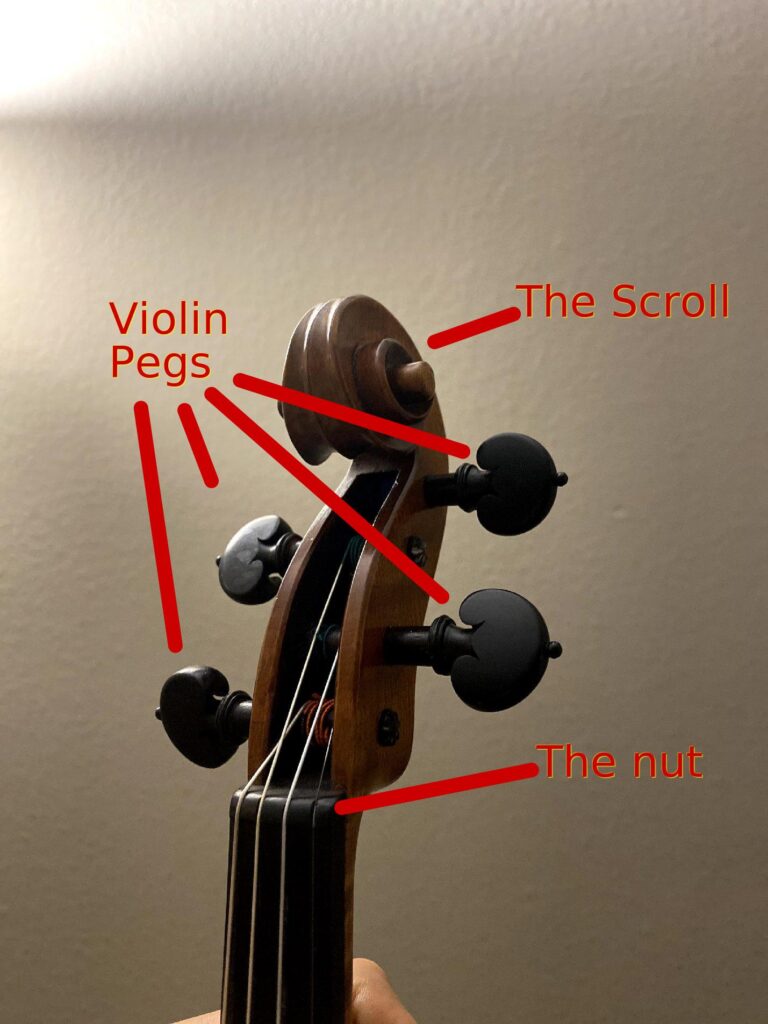
The first string we are going to tune will be A, which is the second string from the E string ( the thinnest one) or the third string from the G ( the thickest one). “A” is usually tuned to 440 Hz meaning that it vibrates 440 times per second. Most orchestras use 440 pitch. However, some of them, such as Los Angeles Philharmonic or New York Philharmonic, tend to tune to A-442, while The Boston Symphony Orchestra or BSO may go up to A-444 because of tradition and conductors’ preferences. The difference is very subtle and unnoticeable for most people.
Baroque violin tuning
Apart from classical violin, if you ever decided to play the baroque violin, you would tune it to A-415 Hz. The baroque pitch used during the Baroque period in the 17th century sounds almost like a “G” sharp in standard A-440 tuning.
What gear to use in violin tuning
For “A” string tuning, you can use a tuning fork, a piano, an electronic tuner, or even an app from the App store( IOS) or Google store( Android). You can even use a violin tuner online which you can find here on top of this page
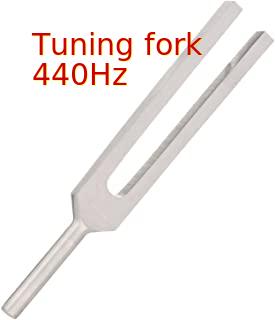
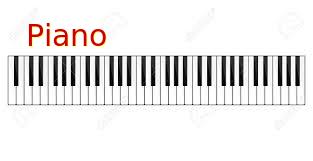
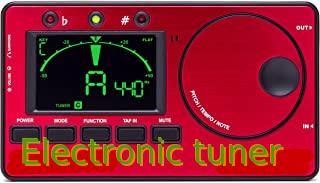
Let's start tuning A string
Play the pitch A on your tuning device and then pluck the A string gently with your finger or play it with the bow. If the sound doesn’t match exactly but is very close, go to the fine tuner section below.
If the sound does not match at all, then find the corresponding peg by following the string to the pegbox ( the scroll) and locate it. the “A” string is located on the upper peg on the right side of the scroll.
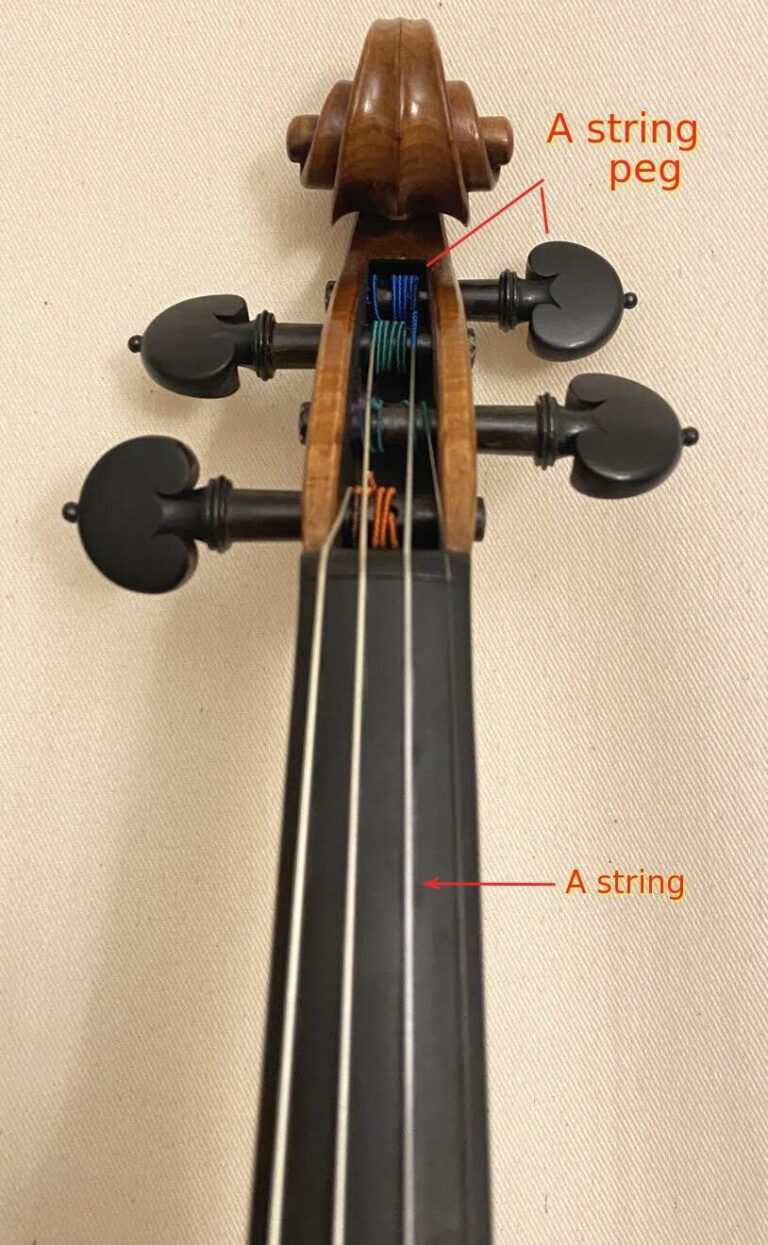
Make sure that you can rotate the peg, but remember to do it slowly and delicately since even a slight rotation of the peg can make a huge difference to the string’s pitch.
Therefore, if you are not sure which way to tune the string, try to loosen it first by turning it counterclockwise and move the peg by approximately one-eighth towards the body of the violin.This will release the tension a little bit and protect the string from breaking by overtightening ( that’s why we want to loosen the string first).
After loosening it, pluck it again and listen to the pitch. It should sound lower than A-440 ( your tuner’s pitch). In this section you can use the Violin tuner online below to tune your A string.
Here you can hear violin tuner online for A note
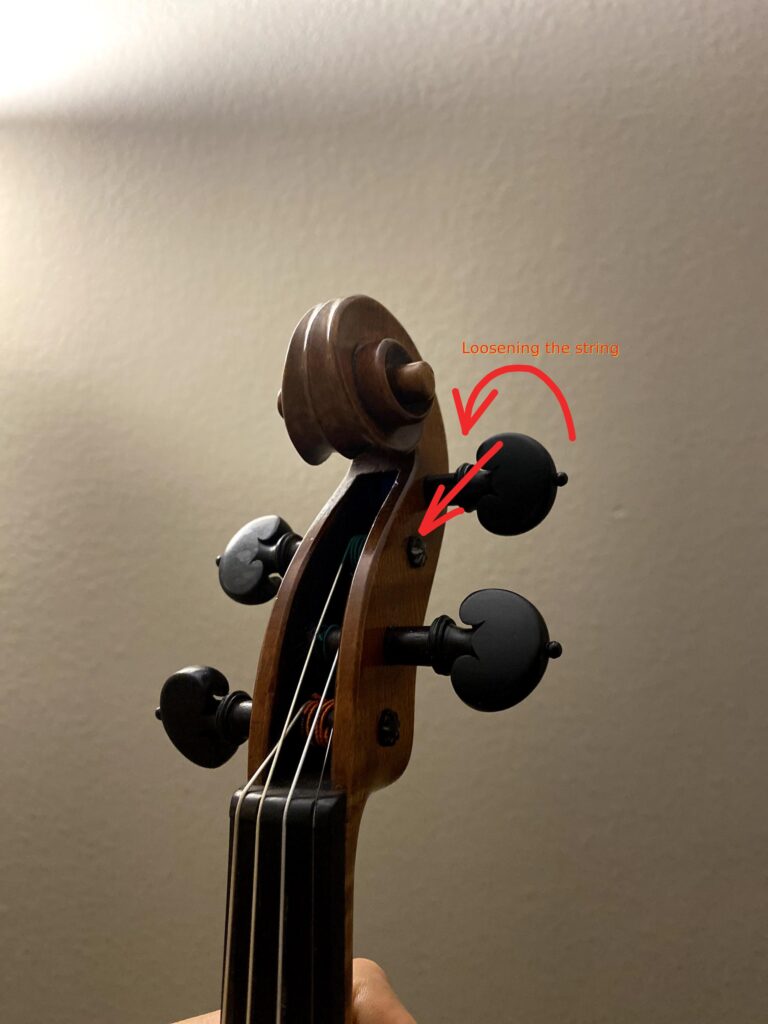
If the A string is way out of tune, it might not be very clear at first how to match its pitch to a tuner. You will have to gradually start tightening the string, which is done by rotating the peg towards the top or clockwise, then stopping to pluck the string and check if the pitch gets closer to your tuner or a tuning fork.
If the peg doesn’t hold the pitch and the string becomes loose right after rotating it, it is advisable to push the peg tightly into the pegbox. While turning it, apply light pressure towards the scroll and simultaneously push the peg into the pegbox with your thumb and the index finger. Be gentle, and do this slowly. If you feel that the peg tightens in the peg-hole and stays in its position, stop pushing it inside.
Continue tightening the string and comparing pitches. When you reach the desired pitch and find that it’s too high or too low( too flat or too sharp), then loosen the string and tighten it again until the pitch becomes identical to the pitch of your tuner.
Do not worry: this task can be troubling even for experienced players.
Tuning D, G, and E strings
After getting the A string tuned, it is time to move onto D string and then G.
The peg for D string is located on the top left side of the scroll. Use the same technique you used to tune A string. D string pitch is 293.66 Hz.
After you are done with D string, go to the G string. Its peg is on the left bottom side of the scroll. Its pitch is 196 Hz.
Congratulations! You tuned all three strings successfully!
E string violin tuning
Let’s go to the E string (the thinnest and most delicate string), which is usually made of steel or gold-plated steel in case you use a Pirazzi Gold Violin E string. During the Baroque era, all strings were made of gut ( sheep or cattle intestines- sounds gross, right?), and it was easier to tune them. However, they didn’t sound as bright as the modern strings today, although the sound was warmer and had a richer tone.
The peg of the E string is located on the right bottom side of the scroll. Pluck it first gently to hear the pitch. If it sounds close to the tuner’s pitch ( E pitch is 659.26 Hz), locate the fine tuner installed into the tailpiece. The tuning technique is the same: tighten it with a clockwise movement. Moving it counterclockwise will loosen the string.
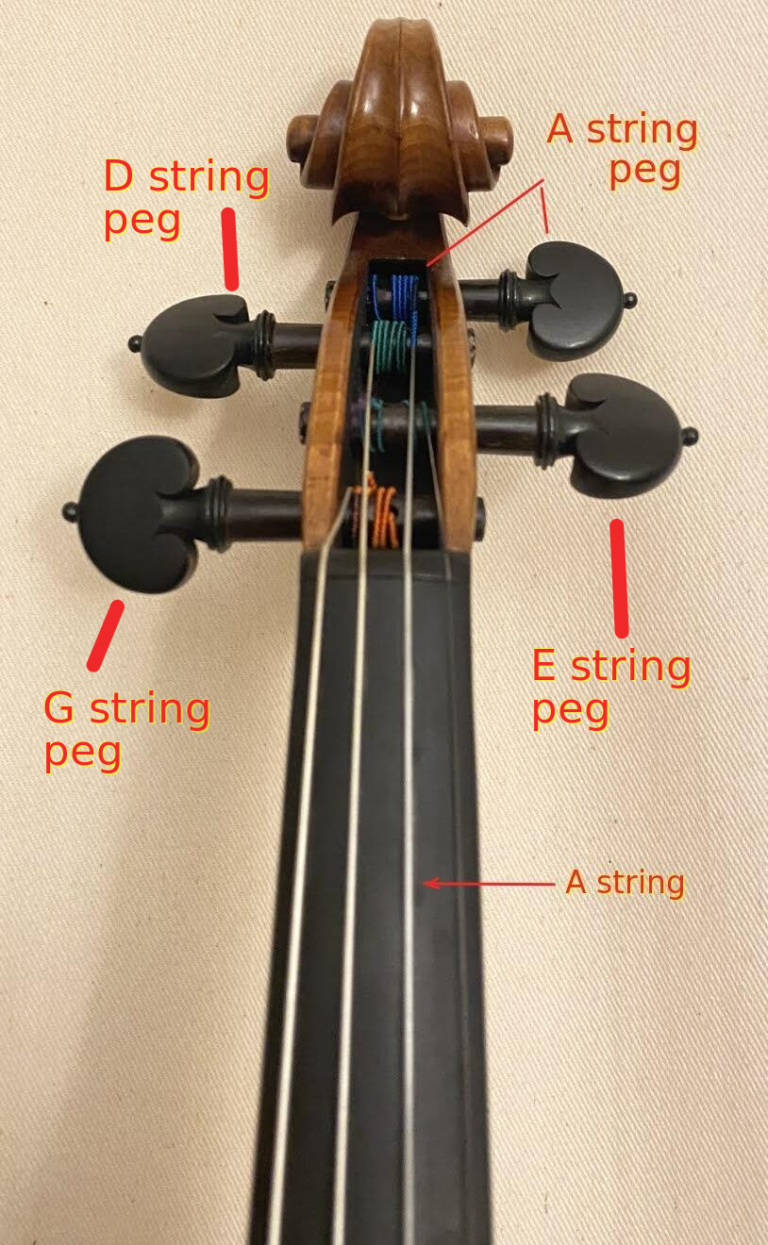
Fine tuners
Fine tuners were designed to make the tuning process more easy and precise, especially for the E string. Compared to tuning with the pegs, you will able to achieve much more precision with fine tuners.
If other strings on your violin have fine tuners, you can use them to perfect the pitch as you did with the E string. Normally, if you are a beginner and just bought a violin from a violin shop, your instrument will probably have a tailpiece with built-in fine tuners which is very useful and makes the tuning process easier and smoother.
On the other hand, a plastic tailpiece with built-in fine tuners is heavier than a custom-made wooden tailpiece and does not transfer sound well. Moreover, fine tuners tend to dampen the sound, which is why professional violinists use only one fine tuner for the “E” string and tune other strings with the pegs.
If you have an expensive instrument, you wouldn’t want to dampen its sound with fine tuners and risk having a heavy tailpiece installed on it.
Custom made wooden tailpiece with added E string fine tuner
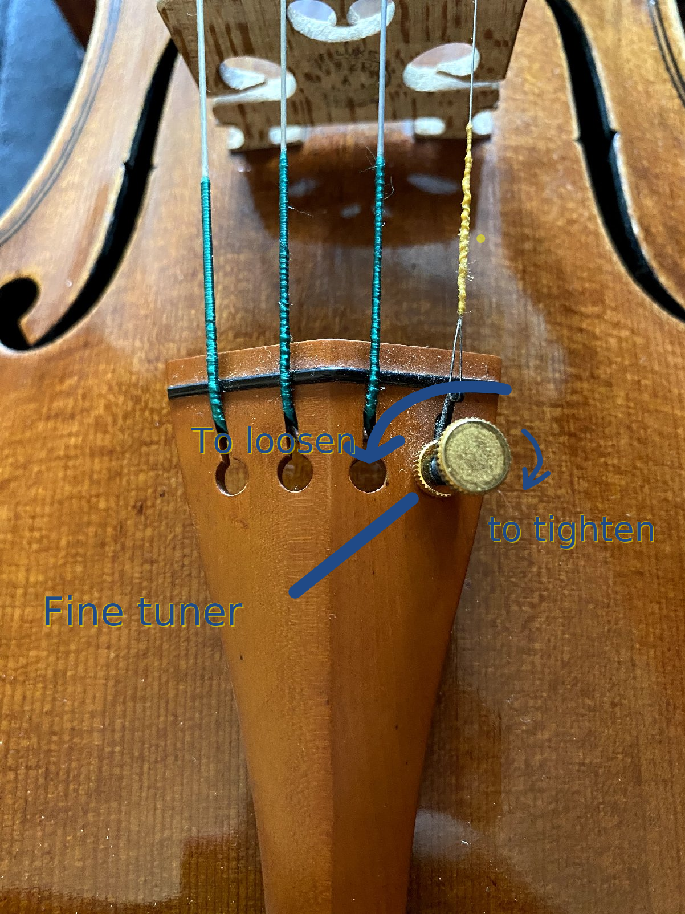
Tips for tuning your precious instrument 🙂
What tuning gear should I use?
You can use a tuning fork
Piano
Electronic tuner
Or an app from your android phone or an iPhone. I tested many apps and found this app to be one of the best for tuning violin or viola which is free and easy to use called Tuner Lite by Piascore.
Some of my pegs do not stay in place, and even after pushing them inside the peghole, they tend to slip loosening the pitch.
If pushing your pegs inside while tuning does not help and they do not hold the pitch, you will have to lubricate them. There is a special chalky peg compound called “Hill the Original peg compound,” which you will need to apply to each peg individually. Unfortunately, you will have to remove the strings to take out the desired peg you want to lubricate. If you decide to do that, do not remove all strings at once. Do it string by string to preserve the stability of the bridge and the soundpost.
My strings continue going out of tune after I replaced them recently.
It is normal for new strings to stretch or expand, although all of them are different depending on the brand, type and name. It can take from a few hours to a week or two for the strings to settle in. Steel strings settle in( stretch out) faster than synthetic ones. I personally use Vision Titanium Solo strings, and when I first put them on, I have to wait a week and a half for them to settle in. In contrast, when I used Pirastro Chromcor, I only had to wait a few days.
When you change your strings, make sure to tune your violin first and then check them again after your practice session by tuning them again. At some point, you will notice that they will not require tuning anymore, which means they have finally settled in .
I have four fine tuners already installed on my tailpiece, isn't that great?
While fine tuners can help you with tuning, some experienced violin players prefer to use only one fine tuner for E string because it is more difficult to tune it with the peg. Many times you can find a violin tailpiece with already integrated fine tuners. Also, fine tuners can be very helpful if you use metal strings. In general, fine tuners are a must for beginners, but for professionals, they have some disadvantages such as:
They add weight to the violin.
They dampen the sound.
Occasional buzzing.
don’t forget to read other articles which can help you in violin playing:
How to hold a violin bow for beginners- read here
Thanks for reading this guide, I hope it genuinely helped you in violin tuning. If you have more questions, you are a student or a parent, and want to improve your violin playing or find a violin tutor, you can schedule an online violin lesson with me.
